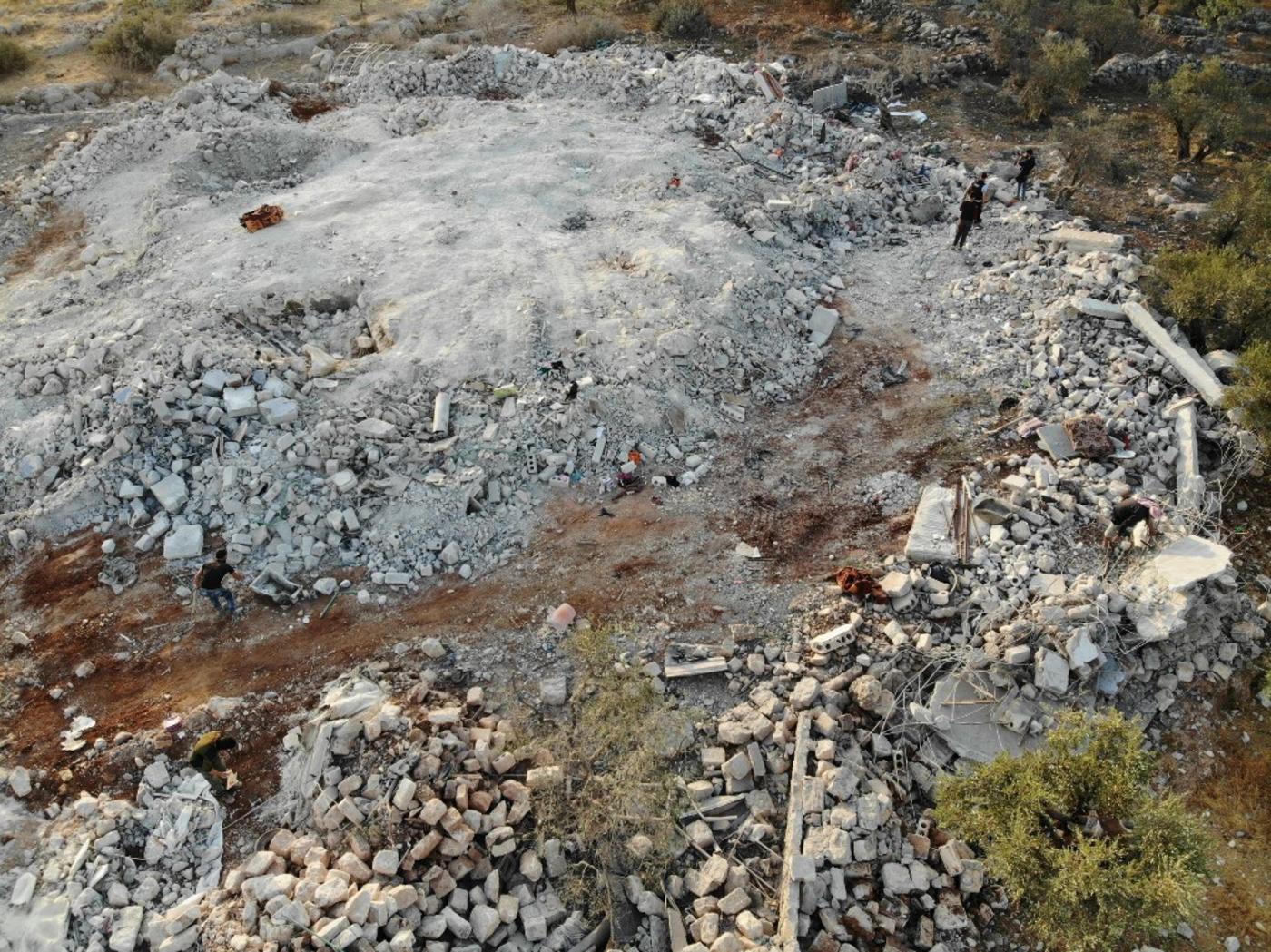Abu Bakr al-Baghdadi, fugitive leader of the Islamic State (IS) group, killed himself during a raid by US forces in Syria’s northwestern Idlib province, US President Donald Trump announced Sunday.
Trump said Baghdadi killed himself and three children by detonating an explosive belt after being pursued by military dogs into a tunnel as American special forces raided his compound in the village of Barisha, near the Turkish border.
“Last night the United States brought the world’s worst terrorist to justice. Abu Bakr al-Baghdadi is dead,” Trump said.

“He died after running into a dead-end tunnel, whimpering, crying and screaming all the way… As our dogs chased him down, he ignited his [suicide] vest, killing himself and three children,” Trump added.
“His body was mutilated by the blast, the tunnel had caved in on him, but tests results gave complete identification – it was him.”
US President Donald Trump
Reports said eight helicopters had crossed into Syria’s Idlib province late Saturday night, heading towards the village of Barisha, which is less than 5km (3 miles) from the border with Turkey.
Most military and civilians in Idlib thought the aircraft were Turkish, as they flew at a low altitude towards Turkish observation points in the area.

Iraq said in a statement on Sunday that its National Intelligence Service, through “constant monitoring and the formation of a specialised task force over an entire year,” pinpointed Baghdadi’s location and provided it to the United States, which carried out the raid.
Baghdadi, who led IS for the last five years and the Islamic State in Iraq for four years before that, had been thought to be hiding somewhere along the Iraq-Syria border.
He remained among the few IS commanders still at large despite multiple claims in recent years of his death.
Last month, IS issued a 30-minute audio message purporting to come from Baghdadi, in which he said operations were taking place daily and calling on supporters to free women jailed in camps in Syria and Iraq over their alleged links to his group.
In the message, Baghdadi also said the US and its proxies had been defeated in Iraq and Afghanistan, and that the US had been “dragged” into Mali and Niger.
The strike against Baghdadi comes amid concerns that a recent US pullback from northeastern Syria may infuse new strength into the group, which had lost the vast stretches of territory it once controlled.
At its peak, IS controlled territory the size of the UK, and about 10 million people lived under the group’s control.
Turkey’s defence ministry said that Turkish and US military authorities exchanged and coordinated information ahead of the attack.
“Prior to the US operation in Idlib province of Syria last night, information exchange and coordination between the military authorities of both countries took place,” the ministry said on Twitter.
US Secretary of Defence Mark Esper said in a statement on Sunday: “Last night, US joint special operations forces and interagency partners flawlessly executed an… operation to capture or kill Abu Bakr al-Baghdadi. As a result, al-Baghdadi, who led the Islamic State of Iraq and Syria terrorist movement and inspired one of the most brutal and misguided terror campaigns in modern history, is dead at the hands of the United States military.”
Despite losing its last significant territory, and now its leader, IS is believed to have sleeper cells around the world and some fighters operating from the shadows in Syria’s desert and Iraq’s cities.
“The most likely outcome is that the death of Baghdadi leads to a moment of silence and a pause in terror attacks,” Hisham al-Hashimi, a Baghdad-based specialist on extremist movements, told AFP.
AFP and Reuters also contributed to this report
